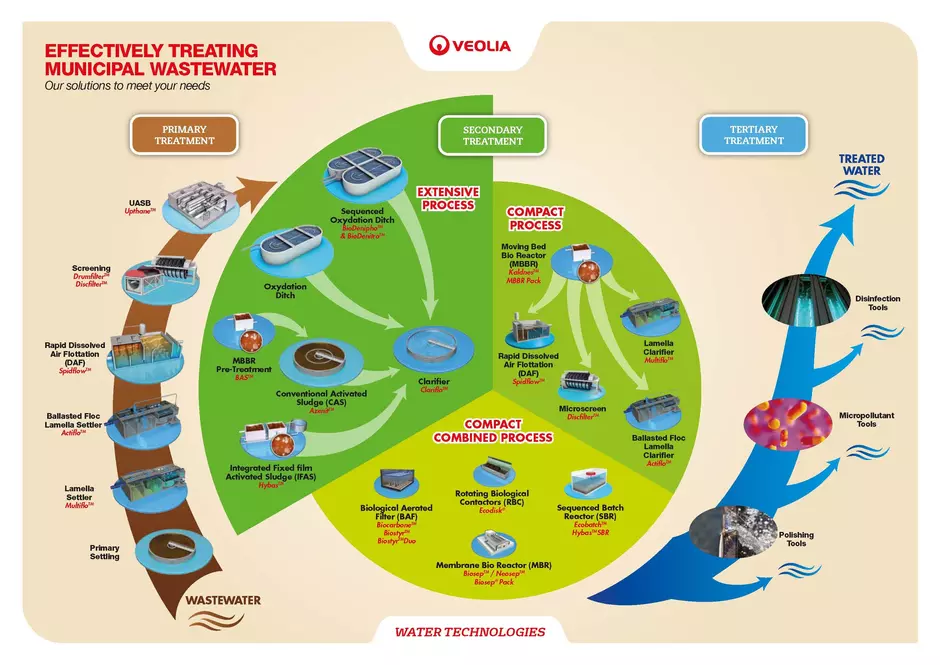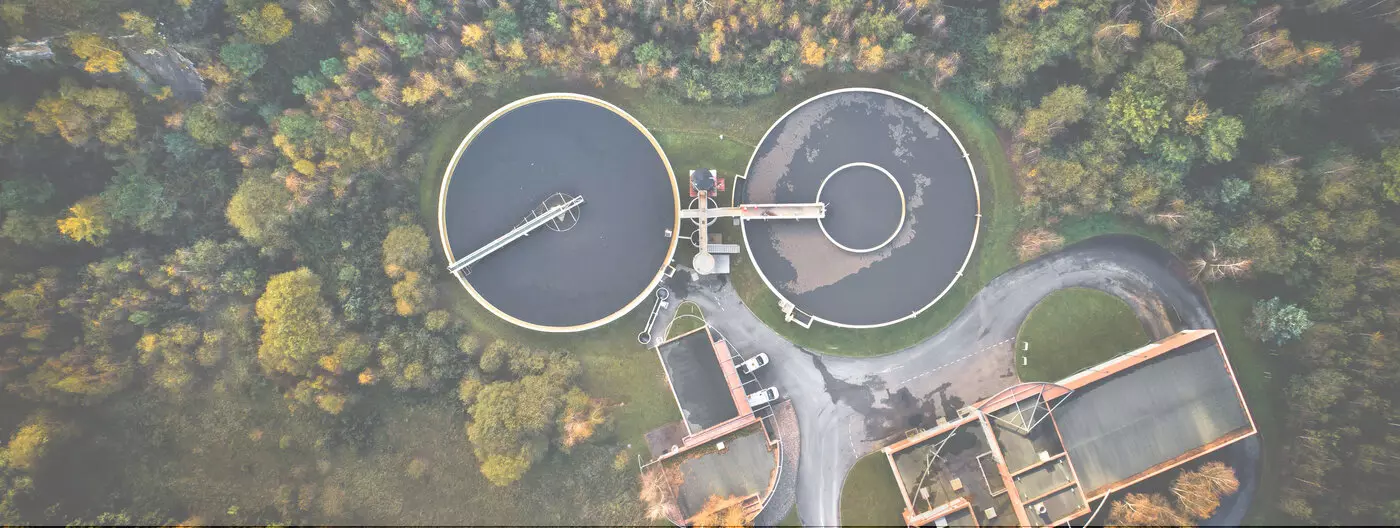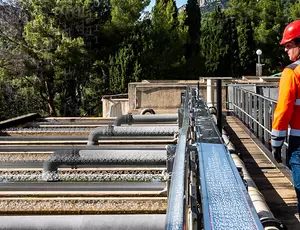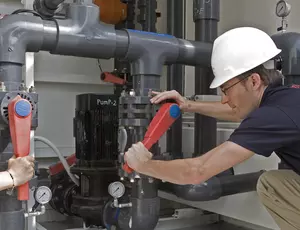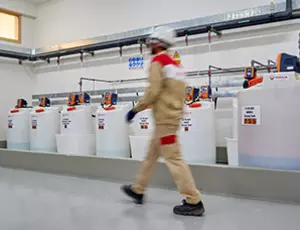Veolia Water Technologies offers municipalities a large range of patented technologies optimizing the management of effluents and wastewater while scrupulously respecting the latest health and environment standards.
Wastewater by its definition is water that has already been used. Wastewater treatment plants treat municipal effluent, removing dissolved or suspended matters, ensuring the water returned to the environment or reused complies with the quality standards required.
As an important part of sanitation management, wastewater treatment is an essential service provided by municipalities. Optimizing municipal water cycles can become a crucial sustainable development tool due to the increasing scarcity of the resource.
- Reduce the amount of waste released into the environment.
- Reduce or eradicate water loss due to water pollution.
- Prevent potentially harmful contaminants from being released into the environment.
- Reduce costs owing to simplified waste disposal.
- Ensure wastewater treatment and effluent standards are met, maintained and continuously monitored.
How Veolia helps municipalities treat wastewater
Water sanitation is our specialty. On a daily basis, we provide innovative and scalable solutions to thousands of customers around the world – for the efficient and sustainable treatment of their wastewater and effluents. Our broad portfolio of patented technologies and global network of experts provide peace of mind for all municipalities subject to strict health and environmental standards. We seek to continuously improve our sanitation systems through the gathering of systematic feedback from our engineers in the field.
Our sewage treatment know-how is one of the key pillars of the expertise we provide to support you to reach your sustainable development goals. As a major player in sustainable development, we have a wide range of solutions including:
- sanitation technologies;
- sludge treatment technologies;
- recovery of reusable materials wastewater.
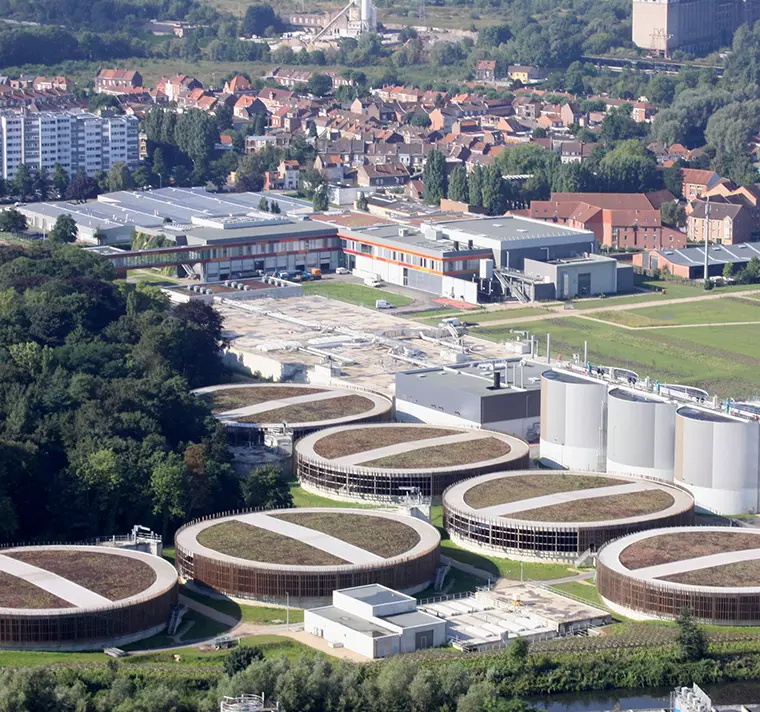

Efficiently treating important volumes of wastewater due to the population increase.

Eliminating pollutants from stormwater.

Avoiding damages to the aquatic environment and wildlife.

Reducing public health problems by properly treating the raw sewage.
We provide all sanitation equipment needed for the day-to-day operation of safe and environmentally compliant wastewater treatment plants of all sizes. We offer tailor-made, efficient and cost-effective solutions covering the entire cycle of wastewater treatment:
Primary treatment
The first stage of the water treatment process focuses on separating suspended solids (SS) from wastewater. We remove 70% to 90% of these materials through our flocculation / coagulation / settling and flotation processes – with the injection of chemical reagents depending on the degree of purification required.
Secondary treatment
The secondary treatments then use advanced biological treatment methods, leveraging the ability of certain bacteria to eliminate dissolved pollutants contained in wastewater – such as carbon, nitrogen and phosphorus pollutants. These biological treatment methods are sometimes associated with the use of chemical reagents when treatment goals are high.
Tertiary treatment and reuse
This final stage looks to remove any remaining dissolved solids from purified water and disinfected wastewater so that the treated water can be reused for other purposes.
Sludge treatment
The pollutants eliminated during treatment operations become sludge, and recycling and recovering this substance is one of our specialities.
Odor management
To remove any unwanted odors, while also guaranteeing compliance with air quality regulations, we ensure polluted air extraction continuously takes place throughout the water treatment process. The extracted air is then treated appropriately before being expelled.
Chemical conditioning of water
All sanitation plants require chemicals for optimal operation. The chemicals used to ensure water can be reused have a significant impact on the long-term reliability of facilities. Our range of Hydrex® water treatment chemical helps customers optimize the performance and safety of their water cycle while reducing maintenance and operating costs.
Supporting municipalities all over the world to treat wastewater
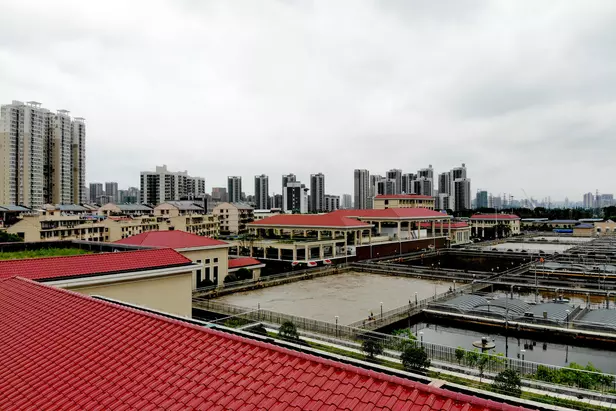
Located at Jinxia development area in Kaifu District, Changsha city, Kaifu wastewater treatment plant serves 620,000 citizens. In 2014, our client started the plant upgrade project in order to meet the China National Sewage Discharge Standard Class IA.
Through a combination of technologies, we provided a compact process that could fit in the very limited space available, while the excellent operation led to better-than-expected results.
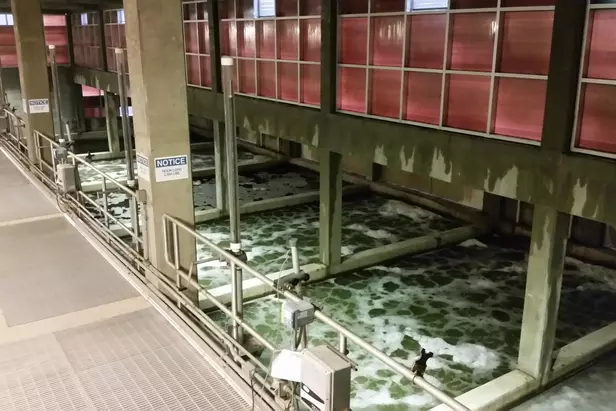
The New Rochelle Wastewater Treatment Plant (WWTP), located in New York, discharges to the Long Island Sound. It serves a population base of 65,000 people. In 2005, a negotiated Order-of-Consent required an upgrade to the WWTP to meet new discharge levels and tighter restrictions. Land availability in New York is scarce, so the solution needed to fit on the existing site.
We provided a Biologically Active Filter (BAF) technology, and designed solutions to meet future flow needs with guaranteed effluent nitrogen performance, producing an effluent free of contaminants and solids. We also provided an upgrade to the existing pure-oxygen activated sludge system to produce a more stable influent to the process allowing Westchester County to improve the health of the Long Island Sound.
Discover our technologies for municipal wastewater treatment
Our teams rely on a considerable number of patented technologies to offer each professional or public organization a customized sanitation system that strictly adheres to their relevant specifications. Discover some of our high standard technologies for municipal wastewater treatment:
Would you like more information about our technologies for municipal wastewater treatment?
The World’s main leaders are focusing on carbon neutrality measures, urging all departments to optimize energy rationally, promote green upgrade of traditional industries, improve resource utilization efficiency, and innovate green and low-carbon technologies, so as to achieve low-carbon transformation of trade in services.
Veolia, as a global leader in environmental protection, is also actively participating in activities related to carbon neutrality goals. We have several green and low-carbon technologies which are very suitable for the municipalities.
Let's work together to achieve sustainable development and help to create cities of the future.
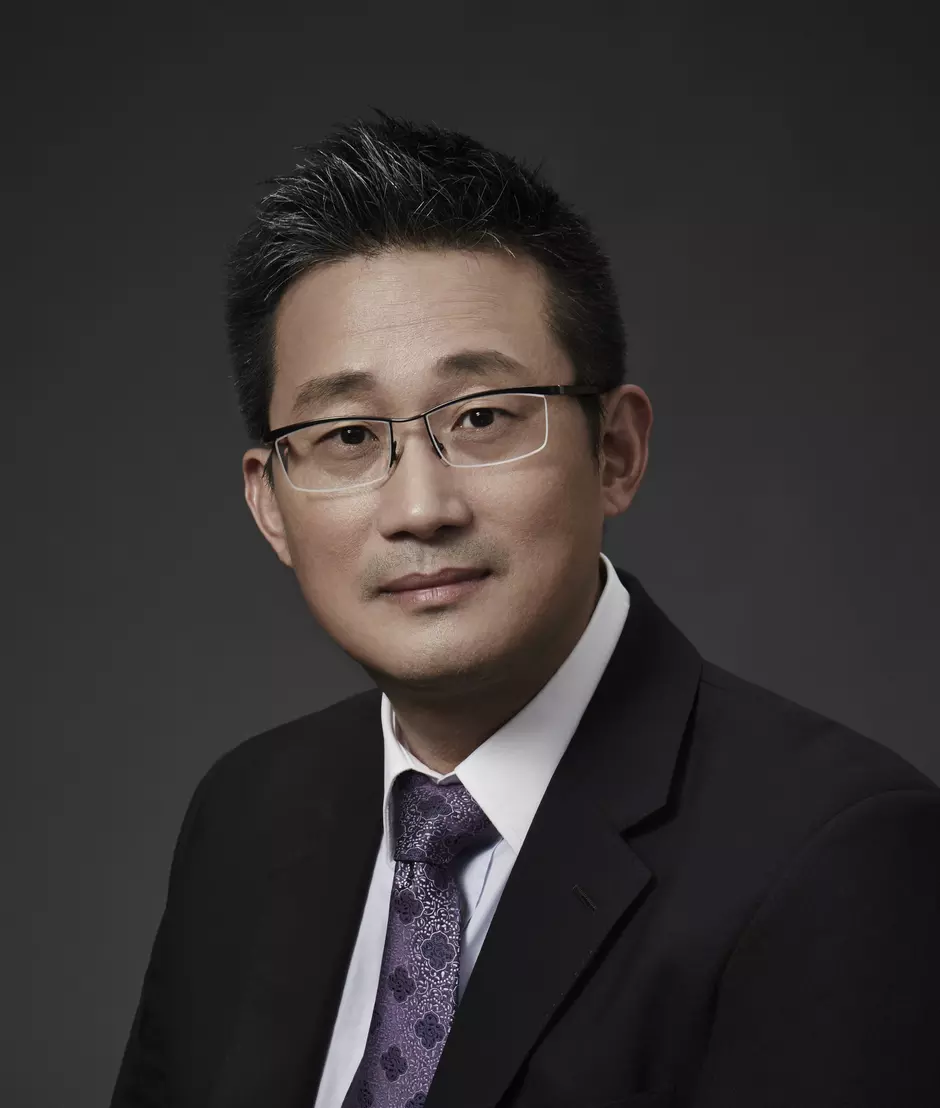
Xiaohua CHEN
Asia Pacific Municipal Process Director
Veolia Water Technologies
Contact Xiaohua through his LinkedIn account
More services for municipal wastewater treatment
FAQ about municipal wastewater treatment
What is sewage sludge?
Sewage sludge is generated at various stages of wastewater treatment in the plant. The primary settlement will capture approximately 50% of the solids entering the plant. This sludge is so-called "fresh" and must be quickly removed and sent to the subsequent treatment stages before the anaerobic decomposition process begins, as this process generates strong odors. The sludge generated by the biological treatment, the secondary sludge or biosludge, is essentially composed of bacteria and residual solids. This sludge is also sent to the sludge treatment stage. Depending on the plant, the sludge can be stabilized with lime, thickened and dewatered, digested, dried or composted. Depending on the ultimate use of the treated sludge, certain parameters will be examined according to the applicable regulations: for example heavy metals, pathogens and micropollutants.
Can energy be generated from wastewater?
Wastewater is composed mainly of organic matter, which contains large amounts of energy. Several different techniques are used to capture this material and to extract and valorize the energy in an optimal way.
The best known energy source is the digestion of sludge generated by wastewater treatment. This process generates biogas that can be purified and used as natural gas or used as an energy source in the plant. Thermal hydrolysis technology maximizes this biogas production, while reducing the volume of sludge to be managed.
Increasing the capture of more energy-rich primary sludge also decreases the plant's carbon footprint. By using all available technologies, it is now possible to aim for an energy neutral wastewater plant. Along with the co-digestion of other municipal or agri-food wastes, this plant can even have a positive balance!
How can wastewater become a valuable resource?
Wastewater treatment plants are increasingly referred to as water resource recovery facilities. Indeed, many uses and products can be recovered from them:
- Further treatment of the effluent will allow water to be reused for a wide variety of purposes, from irrigation to industrial use and even drinking water production.
- Nutrients, such as phosphorus, potassium and nitrogen.
- Renewable energy in the form of natural gas produced from digester biogas, or in the form of electricity or heat.
- Biosolids, such as agricultural fertilizer from stabilized and disinfected sludge .
Technical Resources
Find related content below. If you can’t find exactly what you are looking for please contact us for further assistance.



